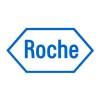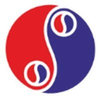Filter interviews by
Jodas Expoim ADL Chemist Interview Questions, Process, and Tips for Experienced
Jodas Expoim ADL Chemist Interview Experiences for Experienced
1 interview found
I applied via Walk-in and was interviewed in Sep 2022. There were 5 interview rounds.

What is chemistry, organic, inorganic, analytical, physical?
How use the chemistry in pharma?
WhichInstrument use in pharmaceutical compny?
(19 Questions)
- Q1. What is use of HPLC? Advantageous and Application? What is chromatography? Type of chromatogeaphy and used?
- Ans.
HPLC is a technique used to separate, identify, and quantify components in a mixture. Chromatography is a method to separate components.
HPLC is advantageous as it can separate complex mixtures with high resolution and sensitivity.
It is used in pharmaceuticals, food and beverage, environmental analysis, and forensic science.
Chromatography is a technique used to separate components based on their physical and chemical pr...
- Q2. What is Define of PH? How many range of PH
- Ans.
pH is a measure of acidity or alkalinity of a solution. It ranges from 0 to 14.
pH stands for 'potential of hydrogen'
A pH of 7 is considered neutral, below 7 is acidic, and above 7 is alkaline
Each whole pH value below 7 is ten times more acidic than the next higher value
Each whole pH value above 7 is ten times more alkaline than the next lower value
- Q3. What is Gas chromatography? And state advantageos
- Ans.
Gas chromatography is a technique used to separate and analyze volatile compounds in a mixture.
It involves injecting a sample into a column filled with a stationary phase and a carrier gas.
The compounds in the sample interact differently with the stationary phase and are separated as they travel through the column.
The separated compounds are detected and identified based on their retention time and other properties.
Adv...
- Q4. What is Acid? What is base? Which range are Acid and base?
- Ans.
Acid is a substance that donates hydrogen ions, while base is a substance that accepts hydrogen ions. The pH scale ranges from 0-14.
Acids have a pH below 7, while bases have a pH above 7.
Acids taste sour and can corrode metals, while bases taste bitter and feel slippery.
Examples of acids include vinegar, lemon juice, and battery acid, while examples of bases include soap, bleach, and ammonia.
- Q5. Which type of detector are used in gas chromatography?
- Ans.
Detectors used in gas chromatography include FID, TCD, ECD, NPD, and MS.
Flame Ionization Detector (FID) is used for organic compounds
Thermal Conductivity Detector (TCD) is used for inorganic compounds
Electron Capture Detector (ECD) is used for halogenated compounds
Nitrogen-Phosphorus Detector (NPD) is used for nitrogen and phosphorus-containing compounds
Mass Spectrometry (MS) is used for identifying unknown compounds
- Q6. What is ion chromatography? And what is resin?
- Ans.
Ion chromatography is a technique used to separate and analyze ions in a sample. Resin is a solid material used in the process to exchange ions.
Ion chromatography separates ions based on their charge and affinity for the stationary phase
Resin is a solid material with charged functional groups that exchange ions with the sample
Examples of applications include analyzing water quality, food and beverage testing, and pharm
- Q7. What is principle of HPLC? How to work in that instrument?
- Ans.
HPLC is a chromatographic technique used to separate, identify, and quantify components in a mixture.
HPLC works by pumping a liquid sample mixture through a column packed with stationary phase material.
The components in the mixture interact differently with the stationary phase, causing them to separate and elute at different times.
The eluted components are detected by a detector and recorded as a chromatogram.
HPLC is ...
- Q8. Which detector are used in HPLC?
- Ans.
Various detectors are used in HPLC such as UV-Vis, fluorescence, refractive index, evaporative light scattering, and electrochemical detectors.
UV-Vis detector is the most commonly used detector in HPLC
Fluorescence detector is used for compounds that have natural fluorescence
Refractive index detector is used for compounds that do not absorb UV light
Evaporative light scattering detector is used for non-volatile compounds
...
- Q9. Which detector are bulkey in gas chromatography?
- Ans.
Thermal conductivity detectors (TCD) and Flame ionization detectors (FID) are bulky in gas chromatography.
TCD and FID are commonly used detectors in gas chromatography
TCD measures thermal conductivity of the sample while FID measures ionization of the sample
Both detectors require bulky components such as a flame or a filament
Other detectors such as mass spectrometry (MS) or electron capture detector (ECD) are less bulk
- Q10. Which type of ion chromatography?
- Ans.
There are two types of ion chromatography: cation exchange chromatography and anion exchange chromatography.
Cation exchange chromatography separates positively charged ions based on their affinity for negatively charged resin.
Anion exchange chromatography separates negatively charged ions based on their affinity for positively charged resin.
Both types of ion chromatography use a mobile phase and a stationary phase to s...
- Q11. Which detector are also used in HPLC?
- Ans.
UV-Vis detector, fluorescence detector, refractive index detector, evaporative light scattering detector are commonly used in HPLC.
UV-Vis detector measures the absorbance of light by the sample
Fluorescence detector measures the fluorescence emitted by the sample
Refractive index detector measures the change in refractive index of the mobile phase
Evaporative light scattering detector measures the scattering of light by t
- Q12. Conductivity detector common used in which chromatography
- Ans.
Conductivity detector is commonly used in ion chromatography.
Conductivity detector measures the ability of ions to conduct electricity.
It is used in ion chromatography to detect and quantify ions in a sample.
It is particularly useful for analyzing inorganic ions such as anions and cations.
Examples of applications include water quality testing, food and beverage analysis, and pharmaceutical analysis.
- Q13. What is Normality? And what is molality?
- Ans.
Normality is the concentration of a solution expressed as the number of equivalents of solute per liter of solution. Molality is the concentration of a solution expressed as the number of moles of solute per kilogram of solvent.
Normality is a measure of the number of reactive species in a solution.
It is expressed in terms of equivalents per liter of solution.
Molality is a measure of the concentration of a solution in t...
- Q14. Which are functional group?
- Ans.
Functional groups are specific atoms or groups of atoms within a molecule that determine its chemical properties.
Functional groups are responsible for the reactivity and solubility of a molecule.
Common functional groups include hydroxyl, carbonyl, carboxyl, amino, and phosphate groups.
Functional groups can be identified by their characteristic chemical reactions and spectral properties.
Functional groups play a crucial
- Q15. Which is principle of uv spectroscopy?
- Ans.
UV spectroscopy is based on the principle that molecules absorb ultraviolet or visible light to excite their electrons to higher energy levels.
UV spectroscopy measures the absorption of light in the UV or visible region of the electromagnetic spectrum.
The amount of light absorbed is proportional to the concentration of the absorbing species.
UV spectroscopy is used to determine the concentration of a substance in a samp...
- Q16. Which is principle of IR spectroscoy?
- Ans.
IR spectroscopy is based on the principle of absorption of infrared radiation by molecules.
IR spectroscopy measures the vibrations of molecules in the infrared region of the electromagnetic spectrum.
Different functional groups absorb at different frequencies, allowing for identification of compounds.
IR spectra can be used to determine the presence of impurities or contaminants in a sample.
IR spectroscopy is widely used...
- Q17. What is range of uv-visible range?
- Ans.
UV-visible range is the range of electromagnetic radiation that is visible to the human eye.
The UV-visible range is typically between 200-800 nanometers.
UV radiation has a shorter wavelength and higher energy than visible light.
Examples of UV-visible range applications include spectroscopy and photolithography.
UV radiation can be harmful to human skin and eyes.
Visible light is the portion of the UV-visible range that i
- Q18. What is oxidation and reduction?
- Ans.
Oxidation is the loss of electrons, while reduction is the gain of electrons.
Oxidation involves the addition of oxygen or the removal of hydrogen from a molecule.
Reduction involves the addition of hydrogen or the removal of oxygen from a molecule.
Oxidation and reduction always occur together in a chemical reaction, known as a redox reaction.
Examples of redox reactions include combustion, rusting, and photosynthesis.
- Q19. What is normal range of PH?
Interview Preparation Tips
Top trending discussions






Interview questions from similar companies

Research Scientist Interview Questions & Answers
Apotex Researchposted on 24 May 2024
Mathematical and Logical Reasoning
(2 Questions)
- Q1. Technical, Guidelines, pharmaceuticals, Regulations
- Q2. USP Apparatus, Dissolution Method

SWOT ANALYSIS OF A NEW PRODUCT IN THE MARKET
RESEARCH ASSIGNMENT ON THE TB SPACE

I applied via Campus Placement and was interviewed in Jul 2024. There was 1 interview round.
Nice aptitude questions of logical reasons and data interpretation

I applied via Company Website and was interviewed in Dec 2019. There were 3 interview rounds.
Interview Questionnaire
2 Questions
- Q1. No matters what questions were asked to me... Than what?
- Q2. The best advice is what you work get the deep knowledge about.

I applied via Approached by Company and was interviewed in Jan 2024. There was 1 interview round.
(2 Questions)
- Q1. Separation techniques for QC
- Ans.
Separation techniques are used in quality control to separate and analyze different components of a sample.
Separation techniques are used to isolate and identify individual components in a mixture or sample.
Common separation techniques include chromatography, distillation, filtration, and centrifugation.
Chromatography separates components based on their different affinities for a stationary phase and a mobile phase.
Dis...
- Q2. Excellent experience through interview
Interview Preparation Tips

I applied via Recruitment Consulltant and was interviewed before Oct 2021. There were 3 interview rounds.

Leadership and decision making skills.
Technical knowledge based on job profile.
(2 Questions)
- Q1. Related to job profile questions
- Q2. Have good communication and presentation skills.
Interview Preparation Tips

I applied via Naukri.com and was interviewed before Jun 2022. There were 3 interview rounds.

(2 Questions)
- Q1. GxP issues and procedures to complie as per regulatory standards
- Ans.
GxP issues and procedures refer to Good Practice standards in regulated industries to ensure compliance with regulatory requirements.
GxP issues include Good Manufacturing Practice (GMP), Good Laboratory Practice (GLP), and Good Clinical Practice (GCP).
Procedures must be documented, followed consistently, and regularly reviewed for compliance.
Regular training and audits are essential to ensure adherence to GxP standards...
- Q2. Change controls or deviations investigation procedures and it's risk assessment with escalations
- Ans.
Change controls and deviations investigation procedures involve risk assessment and escalations.
Establish clear change control procedures to document and track any changes made to processes or systems.
Implement a deviations investigation procedure to identify, assess, and address any deviations from standard practices.
Conduct risk assessments to evaluate the potential impact of changes or deviations on operations and q...
(3 Questions)
- Q1. Salary expectations and why you want to leave your previous organisation
- Q2. What's your future goals in your professional career
- Q3. How you say that you are best suitable person for this role and how complies the job description
Interview Preparation Tips
- Gxp
- Data integrity
- Deviation
- Change controls
- Capa
- Life Sciences
- Healthcare
- Regulatory Affairs

Interview Questionnaire
11 Questions
- Q1. What is your job profile?
- Q2. What type of Equipment you have handled?
- Q3. Why you want to leave your job?
- Q4. What can you do for our company?
- Q5. What is your family background?
- Q6. How many product you have handled in API?
- Q7. What is SAFETY?
- Ans.
Safety refers to the measures taken to prevent harm or danger to people, property, or the environment.
Safety involves identifying and assessing potential hazards
It requires implementing measures to control or eliminate those hazards
It also involves training and educating individuals on safe practices
Examples include wearing personal protective equipment, following safety protocols, and conducting regular safety inspect
- Q8. How many types of Fire Extinguisher?
- Ans.
There are five types of fire extinguishers based on the type of fire they can extinguish.
There are five types of fire extinguishers: water, foam, powder, CO2, and wet chemical.
Water extinguishers are suitable for Class A fires (wood, paper, cloth, etc.)
Foam extinguishers are suitable for Class A and B fires (flammable liquids)
Powder extinguishers are suitable for Class A, B, and C fires (electrical fires)
CO2 extinguish...
- Q9. How you will calculate yield?
- Ans.
Yield can be calculated by dividing the actual amount of product obtained by the theoretical amount that could be obtained.
Determine the amount of product obtained through experiment
Calculate the theoretical yield based on stoichiometry
Divide the actual yield by the theoretical yield and multiply by 100 to get the percentage yield
Yield = (Actual yield / Theoretical yield) x 100%
- Q10. What is your notice period?
- Q11. How much salary you have expected?
Interview Preparation Tips

I applied via Company Website and was interviewed in Jun 2021. There was 1 interview round.
Interview Questionnaire
1 Question
- Q1. About my previous work experience
Interview Preparation Tips
Jodas Expoim Interview FAQs
Some of the top questions asked at the Jodas Expoim ADL Chemist interview for experienced candidates -
Tell us how to improve this page.
Jodas Expoim Interviews By Designations
- Jodas Expoim Junior Executive Interview Questions
- Jodas Expoim Research Scientist Interview Questions
- Jodas Expoim Senior Executive Interview Questions
- Jodas Expoim Research Associate 1 Interview Questions
- Jodas Expoim Research Associate Interview Questions
- Jodas Expoim Warehouse Manager Interview Questions
- Jodas Expoim Executive Assistant Interview Questions
- Jodas Expoim Assistant Manager Interview Questions
- Show more
Interview Questions for Popular Designations
Interview Questions from Similar Companies
|
Executive
155
salaries
| ₹1.8 L/yr - ₹7.5 L/yr |
|
Senior Executive
90
salaries
| ₹4 L/yr - ₹10.9 L/yr |
|
Research Associate
89
salaries
| ₹1.5 L/yr - ₹5.2 L/yr |
|
Assistant Manager
48
salaries
| ₹6 L/yr - ₹12 L/yr |
|
Research Associate II
47
salaries
| ₹3.6 L/yr - ₹7.4 L/yr |

Apotex Research

Synokem Pharmaceuticals

Roche Diagnostics

Modi Mundi Pharma
- Home >
- Interviews >
- Jodas Expoim Interview Questions >
- Jodas Expoim ADL Chemist Interview Questions for Experienced











